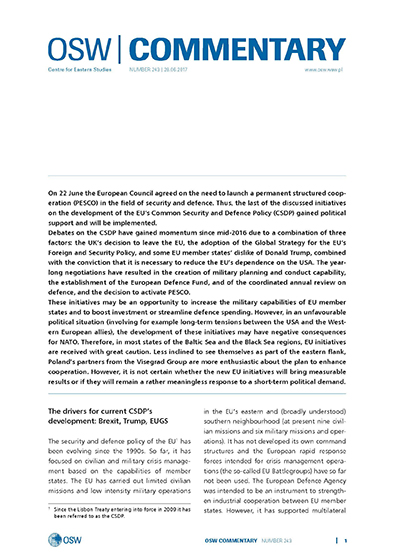The US–China trade dispute: phase two
The US–China trade dispute: phase two
Author(s): Jakub Jakóbowski
Subject(s): Economic policy, International relations/trade
Published by: OSW Ośrodek Studiów Wschodnich im. Marka Karpia
Summary/Abstract: Donald Trump has pursued his strategy of stepping up pressure on Beijing by threatening it with a tariff war since March 2018. The aim of this strategy is to resolve the problems in US–China economic relations that have been mounting for years. These problems include China’s constant trade surplus with the US, the limitations regarding access to the Chinese market, and the cases of technology theft or forced transfer from US companies. The tariffs imposed so far are of negligible significance for trade exchange, although on 6 July Washington plans to announce a 25% tariff on the import of high-technology goods from China, worth US$34 billion (this amount could be increased to US$50 billion). Should China introduce its announced retaliatory measures, the tariff dispute could cover goods worth around US$95 billion, or around 15% of US–China trade exchange (see Appendix). President Trump has already announced that goods imported from China worth another US$200 billion would be covered by tariffs, should China fail to make concessions.In contrast to the previous phases of negotiations, the US’s present demands focus on long-term structural problems rather than specific benefits for American business. Thereby, the formula of talks based on seeking spectacular agreements (‘deals’) that Trump had initially adopted is losing ground. This heralds a launch of another phase of negotiations, this time more comprehensive and more difficult for China. Until recently, Beijing had tried to contain the dispute by making minor concessions. At the same time, it is communicating its readiness to offer a symmetrical response to the American strikes. China is also trying to take advantage of its dispute with the US by applying diplomatic measures to position itself as a defender of globalisation and multilateral trade rules. The tools the US is using may disrupt global supply chains in the high-technology sector, which in turn may impact the economic condition of America’s allies in the European Union and in East Asia.
Series: OSW Commentary
- Page Count: 6
- Publication Year: 2018
- Language: English
- Content File-PDF

